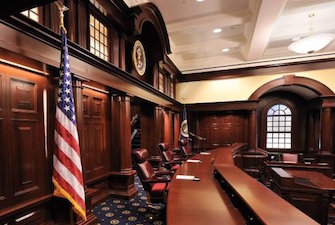Paice LLC v. Ford Motor Co ., (Fed. Cir. Feb. 1, 2018) (Before Lourie, O’Malley, and Taranto, J.) (Opinion for the court, O’Malley, J.)
., (Fed. Cir. Feb. 1, 2018) (Before Lourie, O’Malley, and Taranto, J.) (Opinion for the court, O’Malley, J.)
Paice owns several patents directed to hybrid vehicles. The two patents at issue were directed to a torque-based algorithm for selecting operating modes between the engine and battery-powered motors of a hybrid vehicle. The challenged patents were also continuation-in-parts (“CIPs”) of an earlier application (the ’817 Application). Ford filed several IPR petitions against Paice’s patents that led to the six proceedings on appeal. The Board found most of the challenged claims unpatentable as obvious over two prior art references, Severinsky and the ’455 PCT publication.
While the Court affirmed several of the Board’s validity findings, it reversed the determination that the ’455 PCT qualifies as prior art. The challenged patents claim priority to the ’817 Application, which antedates the filing of the ’455 PCT publication. Thus, the ‘455 PCT is not prior art against challenged claims that use only the ‘817 disclosures, without claiming material added to the CIP disclosures. At issue was the extent to which the ‘817 application included the disclosures of Severinsky, so that challenged claims would antedate the ‘455 PCT. Severinsky was incorporated by reference as follows:
This application discloses a number of improvements over and enhancements to the hybrid vehicles disclosed in the inventor’s U.S. Pat. No. 5,343,970 (the “’970 patent”) [Severinsky], which is incorporated herein by this reference. Where differences are not mentioned, it is to be understood that the specifics of the vehicle design shown in the ’970 patent are applicable to the vehicles shown herein as well.
Paice argued that Severinsky was incorporated into the ‘817 application and was not prior art. Therefore, certain challenged claims could rely on Severinsky for the ‘817 priority date, which was earlier than the ’455 PCT. It was not prior art either.
The Board interpreted the incorporation statement as applying only to those disclosures in Severinsky that are “not different” from disclosures in the ’817 Application. The Court disagreed, finding that Severinsky applies to the specification of the ’817 Application except where the specification says otherwise. In other words, the passage makes clear that it incorporates all of Severinsky, but the ’817 Application only applies to some features of Severinsky’s invention. The Court remanded to determine if Severinsky provides adequate written description to support a finding that the ’455 PCT publication is prior art.
Take Away
Statements to qualify the scope of an incorporation by reference may cause confusion. The statement “[w]here differences are not mentioned, it is to be understood that the specifics of the vehicle design shown in the [incorporated document] are applicable to the [embodiments] shown herein as well” did not undermine the incorporation by reference, because the entire incorporated document was referenced by the specification, which also noted differences.
[Troutman-Ad]
[Troutman-About]

![[IPWatchdog Logo]](https://ipwatchdog.com/wp-content/themes/IPWatchdog%20-%202023/assets/images/temp/logo-small@2x.png)


![[Advertisement]](https://ipwatchdog.com/wp-content/uploads/2024/04/Patent-Litigation-Masters-2024-sidebar-700x500-1.jpg)

![[Advertisement]](https://ipwatchdog.com/wp-content/uploads/2021/12/WEBINAR-336-x-280-px.png)
![[Advertisement]](https://ipwatchdog.com/wp-content/uploads/2021/12/2021-Patent-Practice-on-Demand-recorded-Feb-2021-336-x-280.jpg)
![[Advertisement]](https://ipwatchdog.com/wp-content/uploads/2021/12/Ad-4-The-Invent-Patent-System™.png)






Join the Discussion
No comments yet.